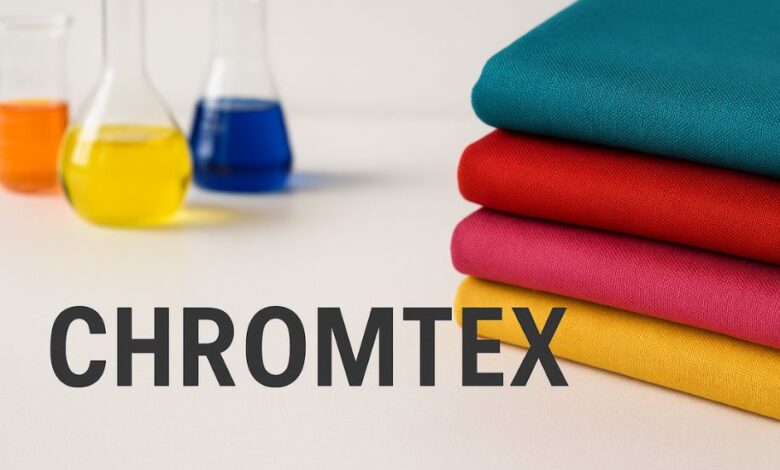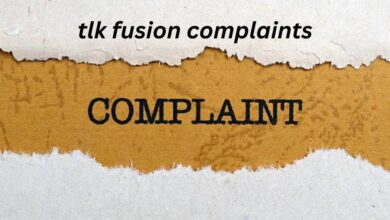Chromtex: Chemical Innovation for Textile Colour & Finishing

In today’s fast-evolving textile industry, chemical innovations and specialty finishes increasingly define competitive advantage. A notable term that has gained traction in recent years is chromtex. Whether referring to textile auxiliaries, pigments, inks or raw materials, “chromtex” captures a nexus of colour, finishing, sustainability and processing that the modern textile world cannot ignore. In this article we explore the many facets of chromtex — from the companies behind the name to the trade exhibitions, product ranges, sustainability imperatives, and why it matters for textile professionals and end-users alike.
Origins and Definitions
The word “chromtex” is not a technical term in standard colour science textbooks, but rather a market-sector brand/descriptor that combines “chrome/colour” with “textiles/technology” (tex). In practice, it refers to:
-
textile chemical auxiliaries and colourants used in dyeing, printing and finishing of fabrics;
-
pigment and pigment-dispersion solutions for textiles, coatings and inks;
-
trade shows and exhibitions focused on the colourants, dyestuffs, printing inks and textile finishing chemicals, especially in Asia.
Thus, when you encounter “chromtex” it could mean a product line, a chemical supplier, a trade event, or a broader ecosystem of processes linking colour and textile treatment.
Chromtex in Trade Exhibitions
One of the most visible uses of the term is in the context of a major exhibition held in India, which brings together colour-chemicals and textile supply chain stakeholders under a single roof. This exhibition, often titled simply “ChromtexChem” (or referenced via “chromtex”), caters to dyestuff manufacturers, pigment makers, chemical intermediates, testing and measuring equipment suppliers, digital textile printing technology providers, and finishing-chemicals houses.
The relevance of such an event is clear: the textile industry in South Asia is both vast and rapidly modernising, and the drive to offer better colour fastness, shorter processing times, lower water and chemical consumption, and compliance with eco-standards has never been higher. For textile mills, garment manufacturers, researchers and chemical companies, attendance offers networking, benchmarking and access to emerging technologies.
Chromtex Chemicals – The Manufacturer Side
In parallel to trade-exhibition use, “Chromtex” (or “Chromatex”) appears as a company name in Pakistan: a manufacturer of textile auxiliaries and finishing chemicals. For example, this company offers a wide array of pre-treatment, dyeing and finishing auxiliaries: antifoams, enzymes, peroxide stabilisers, sequestering agents, wetting agents, polysilicone softeners, paraffin/polyethylene emulsions, dye-fixers, and more. They highlight certifications such as ISO 9001/14001/45001, membership of eco-standards boards, and compliance to international frameworks like ZDHC MRSL (Manufacturing Restricted Substances List) and GOTS (Global Organic Textile Standard). This signals how “chromtex” as a brand is aligned with current imperatives of green chemistry, sustainability and full-supply-chain transparency.
Why “Chromtex” Matters Now
Colour and Finishing Are Differentiators
In a world of fast fashion and short product cycles, textile mills and converters compete not just on cost and volume but on print/finish quality, colour accuracy, touch/feel of the fabric after finishing, and capability to offer value-added finishes (e.g., anti-bacterial, durable water repellent, high-definition prints). “Chromtex”-type chemical solutions enable these differentiators: advanced dyes/pigments for deeper rich colour, dispersions for fine-particle printing inks, finishing auxiliaries that preserve fabric hand and performance.
Sustainability & Compliance Pressures
Manufacturers worldwide are under pressure to reduce chemical footprint, water usage, ensure safe discharge profiles, meet restricted-substance lists, and satisfy retailer/brand audits. “Chromtex” providers that emphasise enzyme-based scouring instead of harsh alkalis, silicone micro-emulsions instead of formaldehyde-based finishes, or advanced wetting/leveling agents that reduce liquor ratio, are thus more relevant than ever.
Supply-chain Localization
Asia, and particularly South Asia, remains a major textile manufacturing zone. Having localised “chromtex” chemical supply, regional exhibitions, and services means mills can respond faster, adapt formulations, and reduce logistics-lead times. The trade-show angle gives a booster effect: suppliers meet mills, new formulations get shown live, partnerships formed.
Key Functional Segments of Chromtex Chemistry
Let’s break down the major functional segments within the “chromtex” domain:
-
Pretreatment / Scouring
Before dyeing or printing, textile substrates need to be cleaned, oils removed, sizing agents stripped, and wettability improved. Chromtex type auxiliaries include bioscouring enzymes, non-ionic wetters, defoamers, peroxide killers (for polyester–cotton blends), etc. These chemicals set the stage for high-quality colouration and finishing. -
Dyeing & Pigmentation
Colourants (dyes and pigments) remain core: azo-dyes, reactive dyes for cotton, disperse dyes for polyester, pigment dispersions for printing. “Chromtex” chemical supply chains support these via levelers, disperse carriers, dye-fixers, migration controllers, and after-treatment to enhance fastness.
Modern challenges: jet dyeing of polyester at lower temperatures, digital inkjet pigment printing, ultra-low liquor dyeing — all benefit from advanced auxiliaries. -
Printing Inks & Colouration Systems
The “tex” in chromtex also covers printing: screen, roller, digital. Pigment inks, plastisol inks, water-based inks, DTF (direct-to-film) systems — some players brand under “chromtex”. Inks need rheology modifiers, mesh-wetting agents, adhesion promoters, curing aids. Here, innovation in “chromtex” chemicals translates into better print definition, wash durability and faster turnaround. -
Finishing & Value-added Treatment
After colouration, textiles differentiate via finishes: softeners, silicone emulsions, durable‐water repellents (DWR), anti-microbial treatments, flame retardants, wrinkle-resist finishes. A “chromtex” chemical house often offers finishing ranges. The finishing stage is where cost, processing speed, environmental impact and performance converge. -
Testing, Measuring & Compliance Aid
Suppliers under the “chromtex” umbrella may also provide testing kits (for colour fastness, extractables), spectrophotometry aids, process control solutions, and discharge/effluent monitoring. With brands and retailers demanding audit reports, chemical suppliers in this space have expanded into service-offerings.
Important Trends Shaping Chromtex Chemistry
Enzyme & Bio-Based Auxiliaries
Chemical houses offering “chromtex” solutions are increasingly highlighting enzyme-based alternatives (bio-scouring instead of caustic soda, enzyme-based bleaching) which reduce chemical and energy consumption, and improve fibre integrity.
Low-Liquor, Zero-Liquor Dyeing
Water scarcity and cost pressures make reducing liquor ratio critical. “Chromtex” auxiliaries suited to low-liquor dyeing or even ultra-low-liquor/zero-liquor printing are gathering interest.
Digital Printing & Fine-Pigment Dispersions
Digital textile printing is growing fast. Pigment dispersions with ultra-fine particle size, high stability, good jetting/printhead behaviour, vibrant colour yield and affordable production costs feature in the “chromtex” world of inks.
Sustainability, Auditability & Certifications
Brands are requiring chemical suppliers to meet audits (e.g., Zero Discharge of Hazardous Chemicals (ZDHC) Foundation MRSL compliance, Global Organic Textile Standard (GOTS) certification) and provide full supply-chain transparency. “Chromtex” suppliers emphasising certifications, full formulations disclosure, closed-loop water systems, and safer processing highlight that shift.
Regional Manufacturing & Near-Sourcing
Asia remains dominant. India and Pakistan are centres of textile chemical manufacturing and supply for “chromtex” auxiliary ranges, meaning mills can source regionally, negotiate shorter lead-times and tailor solutions to local fibre-mixes (cotton, blends, synthetics).
Case Study Illustrations
Case Study A: A textile mill in Punjab (India) replaced traditional high-alkali scouring with enzyme-based auxiliaries from a “chromtex” chemical supplier, thereby reducing energy consumption by 25%, liquor ratio by 18% and fabric damage by 10%. The mill reported faster processing, higher yield and improved whiteness before dyeing.
Case Study B: A digital printing converter in Karachi adopted pigment dispersions and finishing softeners from a “chromtex”-branded chemical house; they achieved better colour yield, faster dryer exit times and improved hand feel — which helped them win a contract from a European sportswear brand demanding high finishing performance.
Challenges & Considerations
While “chromtex” as a concept and supply network holds promise, there are several hurdles:
-
Cost vs legacy chemicals: Advanced auxiliaries often carry higher price; mills constrained by tight margins may hesitate without proven ROI.
-
Technical adoption: New processes (enzyme scouring, low-liquor dyeing) need training and process controls; switching from legacy systems involves risk.
-
Supply-chain certification: Meeting brand audit demands means chemical houses must invest in documentation, third-party testing, traceability; this overhead passes partially to clients.
-
Integration across chains: For full value, “chromtex” supply must link with printing, finishing, recycling, effluent-treatment – disjointed systems may reduce impact.
-
Regional variations: Fibre-types, water quality, machine types differ region-to-region; a chemical solution that works in one country may need modification in another.
The Future of Chromtex
Looking ahead, several trajectories appear likely for the “chromtex” domain:
-
Circular chemistry and textile recycling: As pre- and post-consumer recycling grows, “chromtex” auxiliaries will evolve to handle reclaimed fibres, blended prints, and greener finishing flows.
-
Smart finishes and functionalisation: Finishes that add value (e.g., antimicrobial, UV-protective, wear-sensing) will engage “chromtex” chemical houses. The traditional softener or durable-press finish is giving way to adaptive performance finishes.
-
Digital-native supply chains: From colour matching to print optimisation and real-time monitoring, “chromtex” solution providers will integrate IoT, data-analytics and automated dispense systems for auxiliaries—supporting mills’ move to Industry 4.0.
-
Regional hubs with global reach: While Western chemical majors remain players, we’ll see more regional “chromtex” suppliers (in South Asia, Southeast Asia) offering tailored, cost-effective and flexible packages for local textile ecosystems.
-
Brand-driven demand for transparency: Brands and retailers will increasingly require their chemical supply chains — including “chromtex” houses — to provide full sustainability footprints (embodied carbon, water, chemical hazard score). This means documentation, third-party audits and eco-innovations will become table stakes.
How to Evaluate a “Chromtex” Supplier
If you are a textile mill, converter, or finishing house, here is a checklist when evaluating a “chromtex”-type supplier:
-
Product range breadth: Do they cover full process chain (pretreatment → dyeing/printing → finishing) or only one segment?
-
Certifications & audit readiness: Are they compliant with ISO systems? Are they ZDHC MRSL certified, GOTS/ OEKO-TEX® compliant?
-
Technical support & training: Do they provide process audits, training for new chemical systems, on-site support?
-
Regional service & logistics: Can they supply chemicals locally, with fast lead-times and adaptation to local water/ machine conditions?
-
Transparency & sustainability credentials: Do they share data on chemical hazard classification, water/energy savings in process trials, third-party test results, closed-loop options?
-
Innovation track record: Are they introducing low-liquor systems, enzyme technologies, digital printing adjuncts, functional finishes?
-
Compatibility & ROI: Will switching to their “chromtex” solutions need new machines, extra training, or major process change? What is the payback in terms of yield, quality, and waste reduction?
Why Your Business Should Care
If you are part of the textile supply chain — fabric mill, printer, finisher, brand or retailer — embracing “chromtex” solutions offers a number of concrete advantages:
-
Quality uplift & differentiation: Better colour, better finishing, fewer defects = stronger product story.
-
Faster turnarounds: Modern auxiliaries can reduce cycle time, fewer passes, quicker lead-times.
-
Sustainability credentials: Reduced chemical/water/energy footprint helps meet brand/retailer requirements and public-relations expectations.
-
Cost discipline: Though some advanced materials cost more upfront, savings in processing, energy, waste and re-work can offset this.
-
Risk management: With stricter restrictions on chemical substances, using reputable “chromtex” supplier reduces risk of non-compliance, recall, audit failures.
-
Future-proofing: As push grows on recycling, digital printing, sustainable finishes, being aligned with “chromtex” innovations means you’re better positioned for future disruptions.
Common Applications and Use-Cases
Here are some actual application contexts where “chromtex” chemical solutions shine:
-
Reactive dyeing of cotton/viscose blends: Using advanced levelers and migration suppressants to ensure even dye uptake, good fastness and minimal unevenness.
-
Jet dyeing of polyester at lower temperatures: Employing carriers and disperse dye auxiliaries that allow lower temperature processing, saving energy.
-
Pigment inkjet printing on polyester or blended fabrics: Using ultra-fine pigment dispersions from a “chromtex” supplier plus binders/softeners that deliver sharp prints and soft hand.
-
Garment-washing/denim finishing: Combining enzyme washes, softeners, silicone emulsions and dye fixers to give vintage effect, good hand feel, less fabric damage.
-
Zero/low-liquor dyeing in water-scarce regions: Deploying wetting/leveling agents and special dyeing auxiliaries from “chromtex” houses to reduce water consumption by up to 50%.
-
Functional finishing for sportswear: Using “chromtex”-branded finishing chemicals to impart DWR, anti-microbial, UV protection finishes which meet brand performance specs.
Challenges You Should Be Aware Of
Even with the advantages, there are certain hurdles to be aware of when integrating “chromtex” chemical systems:
-
Process change inertia: Moving from traditional chemicals to new systems means training staff, validating new procedures, potentially modifying equipment.
-
Up-front cost vs legacy budget models: Mills used to low-cost consumables may balk at higher-priced “premium” auxiliary systems without clear ROI.
-
Water/quality variation: Local water hardness, iron/chloride content, machine condition can impact how well a new “chromtex” chemical system works; trials may be required.
-
Supply chain dependency: If a “chromtex” supplier is distant or has logistic issues, you may face downtime; local support is a plus.
-
Audit and traceability burden: Often, chemical suppliers must meet brand/retailer demands for documentation, which means additional regulatory effort.
-
Branding confusion: Because “chromtex” is used by different entities (exhibitions, chemical houses, ink brands), clarity is required: which “chromtex” are you dealing with?
Tips for Integrating Chromtex Solutions in Your Operation
If you’re a mill/finisher/brand considering working with a “chromtex” chemical partner, here are practical tips:
-
Start with a pilot line: Before full-scale rollout, select a small lot or fabric run to test new “chromtex” auxiliaries under your machine/water/fibre conditions and compare yield, quality and cost.
-
Analyse full cost-of-ownership: Don’t just compare chemical cost per kg — include energy, water, re-work, wash-offs, fabric damage, lead-time improvements.
-
Engage your processing team early: Operators, shift supervisors, dye-masters should be involved in training and evaluation of new “chromtex” chemistry.
-
Monitor metrics: Track colour fastness, repeatability, liquor ratios, effluent quality, processing time — keep baseline data and compare after change.
-
Communicate your story: If you adopt “chromtex” solutions and gain water/chemical/energy savings, use these in your marketing/brand-reporting; sustainability matters.
-
Ensure documentation and audit readiness: Ask your supplier for SDS (safety data sheets), formulation disclosure levels, audit certificates; brands will ask for them.
-
Plan logistics and contingencies: Ensure that the “chromtex” chemical supply chain is reliable, with backup stocks, local stocking if possible, so your operations stay smooth.
The Global Context: Why Asia Matters
The “chromtex” phenomenon is particularly relevant in South Asia (India, Pakistan, Bangladesh) for several reasons:
-
Huge textile/garment manufacturing base with constant need for cost-efficient, high-quality chemical solutions.
-
Local chemical manufacturers and auxiliaries suppliers are increasingly capable, offering “chromtex”-type ranges regionally rather than relying exclusively on imported products.
-
Trade-shows and exhibitions themed around colourants/pigments and additives are emerging in Asia to serve this demand-side, and “chromtex”-type events provide a platform for sourcing, benchmarking and networking.
-
Environmental and regulatory pressures are increasing (water scarcity, discharge norms, brand audit demands) and local “chromtex” chemical houses are adapting faster to serve regional mills.
Spotlight: Why the Name “Chromtex” Works
Why has the term “chromtex” gained currency? Because it encapsulates a value proposition: “chrome” (i.e. colour, pigment, finishing) + “tex” (textiles, technology). It signals chemical solutions tailored for textile and finishing processes. The name conveys: advanced colour/chemistry, textile focus, technical application, process improvement. For marketing and industry language, this is a handy shorthand.
What to Look for in Future “Chromtex” Innovations
As you track the “chromtex” landscape, keep an eye on:
-
Nano- and micro-pigment dispersions: Smaller particles for sharper prints, finer detail, higher gamut.
-
Hybrid enzyme/chemical systems: For example combining enzyme scouring + ultra-mild chemical bleaching in one bath — less time, less energy.
-
Smart finishing chemicals: Finishes that respond to environment (thermo-chromic, moisture-reactive), or embedded sensors in textiles (wearables).
-
Closed-loop and recycled-fiber compatible chemistry: Auxiliaries that cater to fabrics made from post-consumer PET, regenerated cotton, blends.
-
Digital process control integration: Chemical dosing systems linked via IoT to monitoring systems, so “chromtex” auxiliaries are dispensed dynamically based on sensor data.
-
Green-certified, high-transparency chemical ranges: Full disclosure, traceability, low-hazard, low-emission, lower VOC, water-based alternatives.
Conclusion
In summary, chromtex is much more than a buzzword. It defines a growing ecosystem of textile-chemistry solutions where colour, process, finishing and sustainability converge. Whether you are a textile mill seeking better yields, a printer wanting sharper inks, a finishing house needing value-adds, or a brand pushing sustainability credentials, the “chromtex” universe offers opportunities and challenges. By aligning with the right suppliers, running pilots, tracking results, and building your story of chemical and finishing innovation, you position your operation for greater competitiveness, fewer bottlenecks, and stronger differentiation. The future of textile colouration and finishing is not just about dye or fabric — it’s about the smart chemical systems that underpin them. And that is precisely where chromtex fits in.
Thank you for reading — this article is published on Blog Loom. May your textile operations benefit from the insights of chromtex and build a stronger, more sustainable future.
You may also visit: PLG Supplies: Meaning, Logistics, and Business Growth




